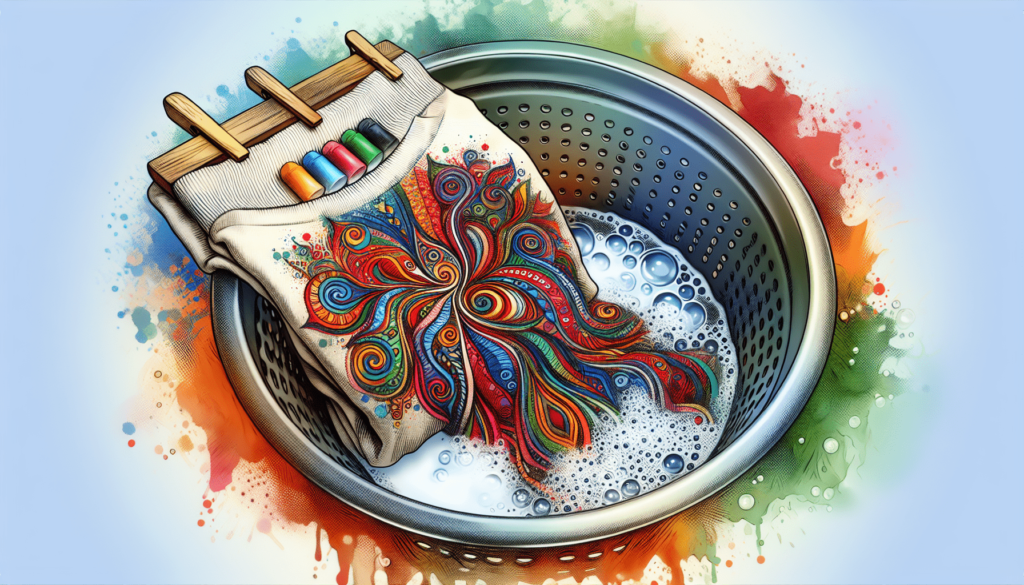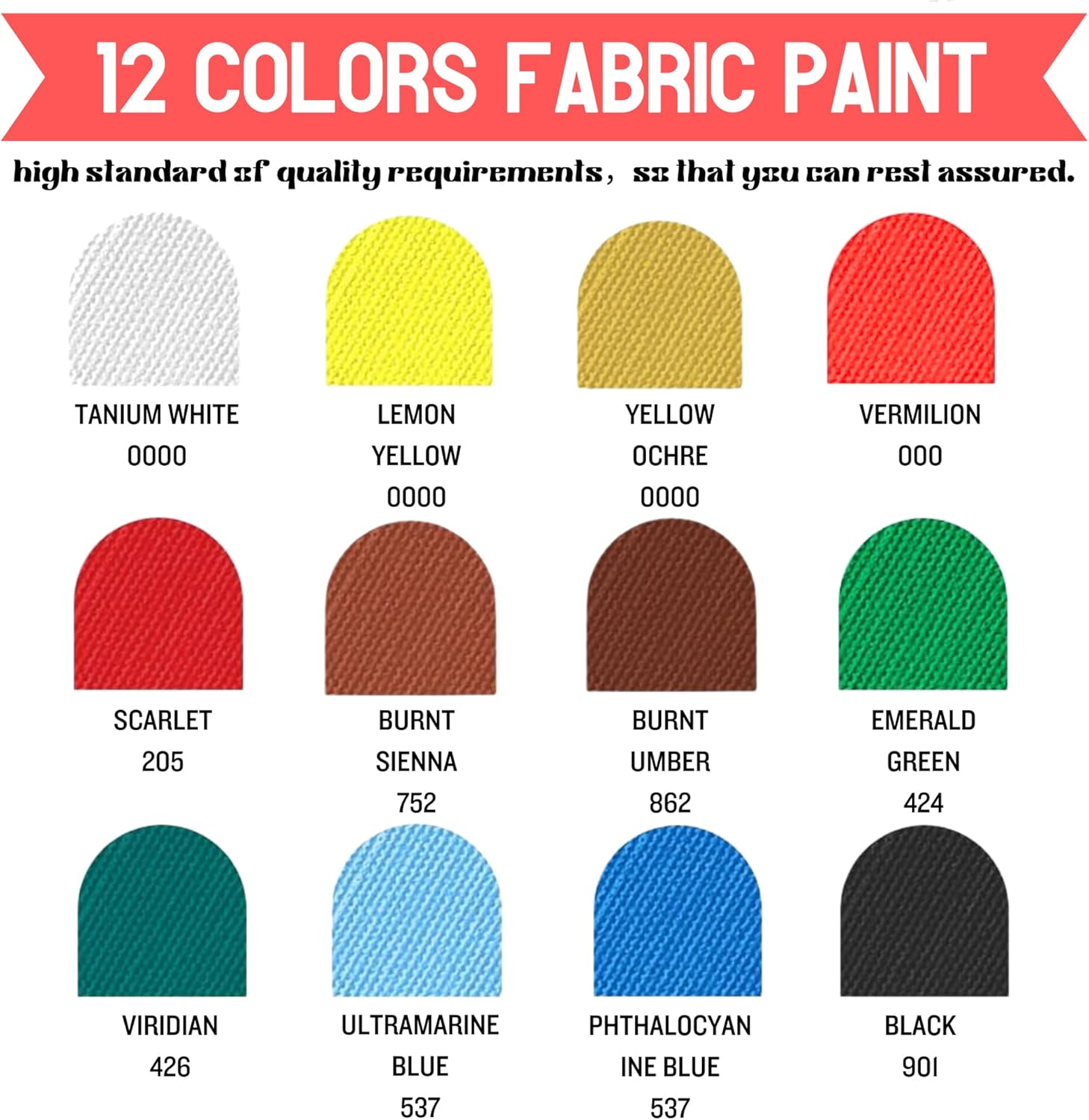Fabric paint can add a vibrant touch to your clothing, but what happens when it comes time to clean your masterpiece? Can you wash fabric paint without ruining your design? This article explores the answer to this commonly asked question and provides insights into the best practices for washing fabric paint. Whether you’re a seasoned artist or a beginner trying out fabric painting for the first time, understanding how to properly care for your creations is essential. Let’s explore the possibilities and discover how to keep your fabric paint looking fresh and vibrant for years to come.
Introduction
Fabric paint is a versatile medium that allows individuals to add creative and colorful designs to various fabric surfaces. Whether you are customizing a t-shirt, enhancing a pair of jeans, or personalizing home decor items, fabric paint offers endless possibilities. However, after completing your masterpiece, the question arises: can you wash fabric paint without compromising the design? This article will guide you through the process of properly washing fabric paint to ensure the longevity of your creations.
What is Fabric Paint?
Fabric paint is a specialized type of paint designed to adhere to fabric surfaces. Unlike ordinary paint, fabric paint contains additives that provide flexibility and durability. It is available in various formulations, each with its own unique characteristics. Some of the most common types of fabric paint include acrylic, textile, and puff paint.
Definition
Fabric paint is a type of paint specifically formulated for application on fabric surfaces. It is designed to adhere to textiles while retaining its vibrant color and durability even after washing.
Types of Fabric Paint
- Acrylic Fabric Paint: Acrylic fabric paint is versatile and widely available. It offers excellent coverage, color retention, and durability. It can be used on various fabric types, including cotton, polyester, and blends.
- Textile Paint: Textile paint is specifically formulated for natural fibers such as cotton, linen, and silk. It penetrates the fabric fibers, resulting in a soft and durable finish.
- Puff Paint: Puff paint creates a three-dimensional effect on fabric. It adds texture and dimension to designs, making them stand out. Puff paint is commonly used for decorative purposes on clothing and accessories.

Washability of Fabric Paint
One of the primary concerns when using fabric paint is its washability. You want to ensure that your designs withstand regular washing without fading or peeling. The washability of fabric paint depends on various factors, including the type of paint used, the curing process, and the fabric type.
Permanent vs. Non-permanent
Fabric paints can be categorized as either permanent or non-permanent. Permanent fabric paint is designed to withstand repeated washings without fading or losing color vibrancy. Non-permanent fabric paint may retain its color for a few washes but will eventually fade or wash out completely. When choosing fabric paint, check the label to determine its permanence.
Heat-setting and Curing Process
To enhance the washability of fabric paint, heat-setting and curing is often necessary. Heat-setting involves applying heat to the painted fabric to help the paint bond with the fabric fibers. This can be achieved by using an iron, heat press, or placing the fabric in a clothes dryer. Curing, on the other hand, involves allowing the paint to dry and set for a certain period before washing. Following the recommended heat-setting and curing guidelines provided by the fabric paint manufacturer is crucial for ensuring the best washability results.
Preparation Before Washing
Before washing fabric paint, it is essential to take certain precautions to avoid damaging the design or the fabric itself.
Read Instructions
The first step is to carefully read the instructions provided by the fabric paint manufacturer. These instructions often contain specific guidelines for washing and caring for the painted fabric. Following these instructions will help you maintain the quality of the design over time.
Test on an Inconspicuous Area
Before subjecting the entire painted fabric to washing, it is advisable to test the paint’s washability on an inconspicuous area. This could be a corner, hem, or seam of the fabric. Apply a small amount of water and a mild detergent to the test area, and gently rub it with a soft cloth. If the paint starts to fade or wash out, it may indicate that the design requires additional heat-setting or that it is not suitable for washing.

Washing Fabric Paint
Proper washing techniques are essential to preserve the vibrancy and longevity of fabric paint designs. Whether hand washing or machine washing, certain considerations should be taken into account.
Hand Washing
Hand washing is a gentle method suitable for delicate fabric paint designs. Fill a basin or sink with lukewarm water and a mild detergent. Immerse the painted fabric in the water and gently agitate it, ensuring not to scrub or rub the design vigorously. Rinse the fabric thoroughly with clean water and gently squeeze out the excess moisture. Avoid twisting or wringing the fabric to prevent stress on the paint film.
Machine Washing
When machine washing fabric paint, select a gentle cycle or a hand wash setting to minimize agitation. Set the machine to a cold or lukewarm temperature to prevent excessive fading or bleeding of the paint. Add a mild detergent suitable for delicate fabrics and avoid using bleach or stain removers that could potentially damage the paint. Place the painted fabric inside a mesh laundry bag to provide an extra layer of protection during the wash cycle.
Temperature and Detergent
Choosing the right temperature and detergent is crucial for the washability of fabric paint. As mentioned earlier, cold or lukewarm water is generally recommended to prevent color fading. It is also important to use a mild detergent specifically formulated for delicate fabrics. Avoid harsh detergents or bleach, as they may negatively impact the colors and integrity of the design.
Delicate Cycle or Hand Wash Setting
Selecting a gentle cycle or a hand wash setting on your washing machine is essential when machine washing fabric paint. These settings reduce the risk of excessive agitation, which can cause the paint to peel or fade. If your machine does not have a specific hand wash setting, opt for the most delicate cycle available.
Drying and Ironing
Proper drying and ironing techniques are crucial to maintain the appearance and integrity of fabric paint designs.
Drying Methods
To dry fabric paint, avoid using high heat or direct sunlight, as these can cause fading or damage to the design. Air drying is the preferred method, allowing the painted fabric to dry naturally. Lay the fabric flat or hang it on a clothesline in a shaded area. Avoid hanging the fabric in direct sunlight, as the UV rays can fade the paint over time.
Ironing or Pressing
Ironing or pressing fabric paint can help set the design further and improve washability. Set the iron to a low or medium heat and avoid using steam. Place a clean, thin cloth over the painted area to protect both the design and the iron. Gently press the iron on top of the cloth, avoiding excessive pressure or rubbing motions. This gentle heat application will help to heat-set the paint, enhancing its durability.
Tips for Maintaining Fabric Paint
To ensure the longevity of fabric paint designs, consider the following tips for proper care and maintenance:
Avoid Harsh Chemicals
When washing fabric paint, refrain from using harsh chemicals such as bleach or abrasive stain removers. These can degrade the paint and affect its vibrancy. Stick to mild detergents specifically formulated for delicate fabrics.
Turn Garments Inside Out
To protect the painted surface, turn garments inside out before washing. This minimizes friction and abrasion between the paint and other fabrics in the wash, reducing the risk of damage.
Button and Zipper Precautions
When washing fabric paint on garments with buttons or zippers, fasten the buttons and zip up the zippers. This prevents them from snagging or catching on other items during the wash cycle, which could potentially damage the paint or fabric.
Removing Stains from Fabric Paint
In the event of a stain on fabric paint, it is important to act promptly to prevent it from setting permanently.
Immediate Action
As soon as a stain is noticed, gently blot the area with a clean cloth or paper towel. Do not rub the stain, as it may spread further.
Stain Removal Techniques
To remove stains from fabric paint, treat the stained area with a mild detergent or stain remover specifically designed for delicate fabrics. Follow the product instructions and gently dab the stain with a clean cloth, working from the outside towards the center of the stain. Rinse the area thoroughly with clean water and allow it to air dry.
Preserving Fabric Paint Designs
To keep fabric paint designs looking vibrant and fresh, follow these preservation techniques:
Cold Wash
Opt for cold water when washing fabric paint designs, as hot water can cause the colors to fade. Cold water helps preserve the integrity and vibrancy of the design.
Air Drying
Whenever possible, air drying fabric paint designs is preferable to using a clothes dryer. The heat from the dryer can contribute to color fading or damage the paint. Instead, lay the fabric flat or hang it in a shaded area to dry naturally.
Avoiding Direct Sunlight
Exposure to direct sunlight can cause fabric paint designs to fade over time. To preserve the colors and prevent unnecessary fading, store or display painted fabric away from direct sunlight.
Conclusion
With proper care and maintenance, fabric paint designs can withstand regular washing and retain their vibrant colors. By following the recommended washing techniques, utilizing suitable detergents, and employing preservation strategies, you can ensure the longevity of your fabric paint creations. So feel free to unleash your creativity and confidently enjoy the artistry and durability of fabric paint.



